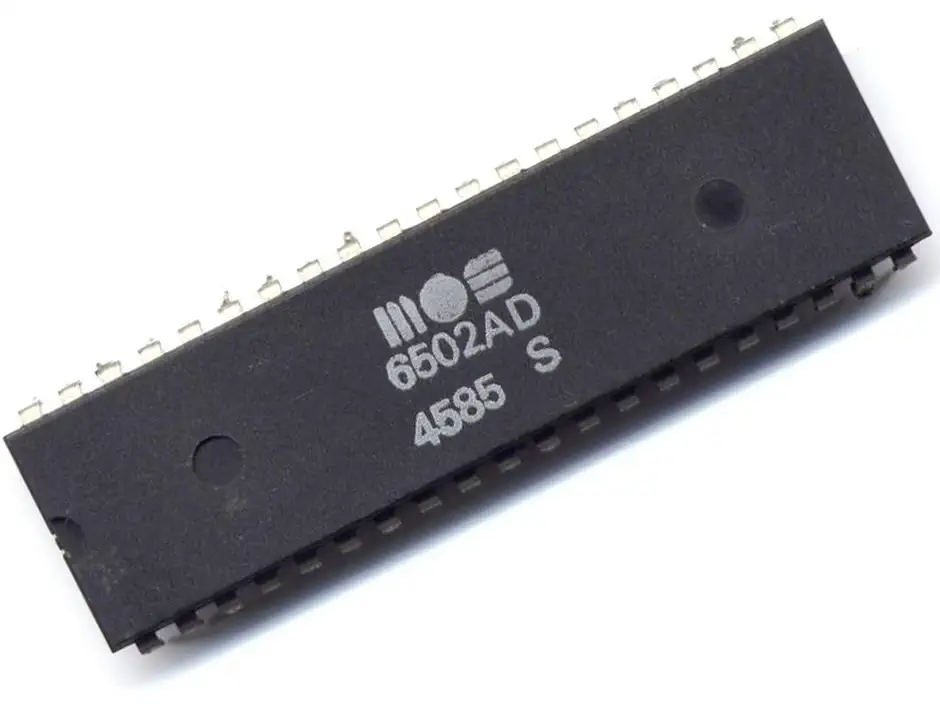Commodore VIC-1001
The Commodore VIC-1001 was the Japanese version of the Commodore VIC-20. It has a character ROM on board and a special keyboard in the PET style, which both allow the entry of Katana. The Japanese characters can be accessed by holding down the Shift and Commodore keys. The name VIC 1001 was in line with the later commodore computers starting with the Commodore PET 2001.
Jack Tramiel famously stated that "The Japanese are coming, so we must become the Japanese!" when commodore launched the VIC 1001 in Japan. He was referring to the influx of Japanese home computers onto the American and European markets.
In Germany the comptuer was introduced as the VC-20, since the word VIC sounds like a German expletive, and was marketed as the VolksComputer (People's Computer).
The VIC-1001 computer was equipped with only 5K of RAM, but used the same MOS 6502 CPU as the PET. The Video chip was a general-purpose color video chip designed by Al Charpentier in 1977 and intended for use in terminals and game consoles, but Commodore could not find a market for it. The chip was rebranded as the MOS Technology VIC and used in the VIC-20 and the VIC 1001.
The VIC-20 really opened up the market to low-price computers selling at retail stores to the general public, rather than professionals or people with an electronics background. In that way, the VIC-20 really was the "People's Computer". The VIC 1001 however, was only moderately successful in Japan
There was a sizable library of software for the VIC-20. The VIC-20 BASIC is compatible with the PET, and the Datasette format for tape is the same. Commodore actively promoted third-party development of software and also created a fan-base that produced a lot of public domain and freeware distributed through online services such as CompuServe, BBSs, as well as through clubs and user groups. Magazines published listings that people could type-in, another way to distribute and share software.

MOS Technology VIC
The VIC (Video Interface Chip), specifically known as the MOS Technology 6560 (NTSC version) / 6561 (PAL version), is the integrated circuit chip responsible for generating video graphics and sound in the VIC-20 home computer from Commodore.
The VIC chip is not only for video display. It also integrates sound and support for analog devices through its sound circuitry and its AD converters. This allows for light-pens and other peripherals on the VIC-20
Features:
- 16KByte address space for screen, character and color memory. (In the VIC-20 only 5KByte points to RAM)
- 16 Colors (Upper 8 can only be used in global background and auxiliary colors)
- Two selectable character sizes (8x8 or 8x16, the first for multi-color, the second for "hires" modes)
- 176x182 resolution (256x280 possible on PAL; 248x232 possible on NTSC)
- 4 Channel integrated sound circuitry; 3 square waves + a white noise channel.
- On-chip DMA
- Two 8-bit AD converters
- Light pen support

MOS 6502 CPU
The 6502 is an 8-bit MicroProcessor designed by MOS Technology. The team was led by Chuck Peddle and had also worked on the Motorola 6800. The 6502 is a simplified, but faster and cheaper design than the 6800.
The 6502 was introduced in 1975 and was the cheapest microprocessor on the market. Together with the Zilog Z80, the 6502 helped start the home computer revolution of the 1980s. The 6502 was used in a wide range of devices: the Atari 2600, the 8-bit Atari home computers, the Apple II, the Nintendo Entertainment System, the Commodore 64, the BBC Micro and many others. All used the 6502 or a variation of it.
The 6502 is a 1MHz design, while the 6502A is designed for 2MHz. The 6502A is 100% compatible with the original 6502.
Commodore soon bought MOS Technology, but conitnued to sell the microprocessor to competitors and licensed the design to other manufacturers.
Source: WikiPedia - MOS Technology 6502
ROM: 20kB Sound Chip MOS 6561 VIC Sound 3 wave channels + 1 white noise channel Display Chip VIC (MOS 6561) Display 22x23 text
176x185 in 16 colors Best Text 22x23 Best Color 16 colors Best Graphics 176x160 in 16 colors Sprites none System OS Commodore KERNAL/BASIC 2.0 Storage External Tape through the Datasette Tape Connector
ROM cartridges. Original Price 69800 Y

